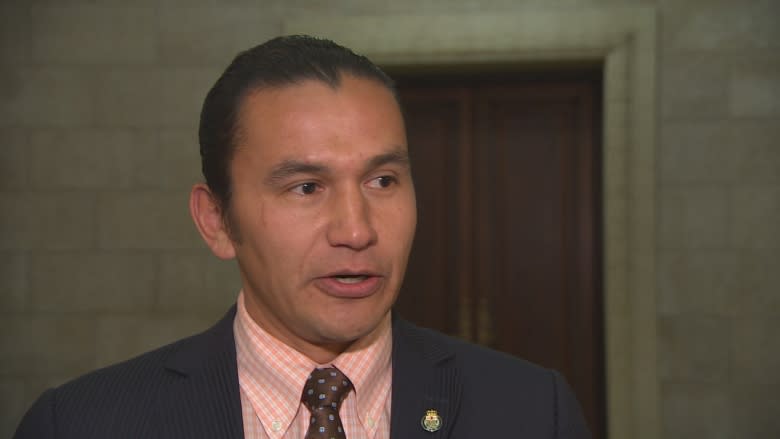Teachers union 'dumbfounded' by removal of cap on K-Grade 3 class sizes
The Manitoba Teachers' Society says it is baffled by the province's announcement to remove caps on class sizes.
On Tuesday, the Progressive Conservative government announced it is dumping legislation that required K-3 classrooms sizes to be limited to 20 students.
Staring next school year, the province will allow school divisions to set their own class sizes.
"I'm actually dumbfounded by this, quite frankly, and extremely disappointed because this initiative wasn't really given a chance to get off the ground," said Norm Gould, president of the Manitoba Teachers' Society. "It just baffles me."
Research, he said, overwhelmingly proves smaller class sizes improve outcomes, reduce distraction and lead to more engaged students.
Education and Training Minister Ian Wishart said the change gives "greater flexibility and autonomy" to school divisions instead of focusing on hiring additional staff and renovating schools to meet the classroom cap requirements.
Under the Progressive Conservatives' new Early Years Education Initiative, school divisions can still spend part of their funding to maintain the smaller classes if they choose to, but that will no longer be mandated, Wishart said.
A news release from the government quotes Ken Cameron, president of the Manitoba School Boards Association, as saying the change will strengthen education.
Wab Kinew, education critic for the NDP, called the policy change "politically motivated" and accused the Tories of throwing out a program simply because it was introduced by his party and showed the promise of success.
"If you ask any parent in the province, they will tell you that they would want their child to have more one-on-one time with teachers," Kinew said.
In the past five years, 454 teachers were hired in Manitoba to help reduce class sizes, the province says.
'Tip of the spear,' says NDP
Manitoba's then-NDP government first announced a move to limit K-3 class sizes in 2011, with the goal of having it completed by 2017. The initiative included $20 million to hire more teachers and $85 million to build more class space.
Children learn better when they receive more personal attention, the NDP government said at the time, and smaller classes give teachers more time to the identify the strengths and weaknesses of each student.
Kinew said he is concerned that removing the cap on class sizes sets the foundation for future freezes on education spending.
"I think we are seeing just the tip of the spear when it comes to Pallister's cuts," he said.
Gould said teachers are also concerned about what this change might mean for staff hired to increase the number of available classes.
"There is a potential there that there is going to be teacher layoffs," he said. "Front-line services are definitely going to be affected by this decision."
Outcomes were not measured: PCs
The Progressive Conservatives say the NDP "capped class sizes arbitrarily and did not include a process to evaluate success or failure of the program."
According to Wishart, data from the Grades 3 and 4 provincial assessments in reading and numeracy demonstrates no significant improvement in student achievement since the inception of the smaller classes initiative.
"It is concerning the previous program had no formal evaluation mechanism to assess whether the initiative was producing better results in kindergarten to Grade 3 literacy and numeracy," he said.
"Our province-wide measurement of educational outcomes will … ensure that Manitobans are getting the results they want from our education system."
Kinew responded by saying the data analyzed by the government was too small in scope to demonstrate the effectiveness of a program introduced less than 10 years ago.
Longer-term studies, he said, show small class sizes — especially in early years — can have a measurable, positive impact.
"The program is still in the process of being rolled out," he said. "When you look at the long-run data, it's clear that class size makes a positive difference for kids."
Manitoba Education and Training will work with school divisions and post-secondary partners to evaluate the outcomes of teaching methods and enable adjustments to be made based on performance results, Wishart said.



